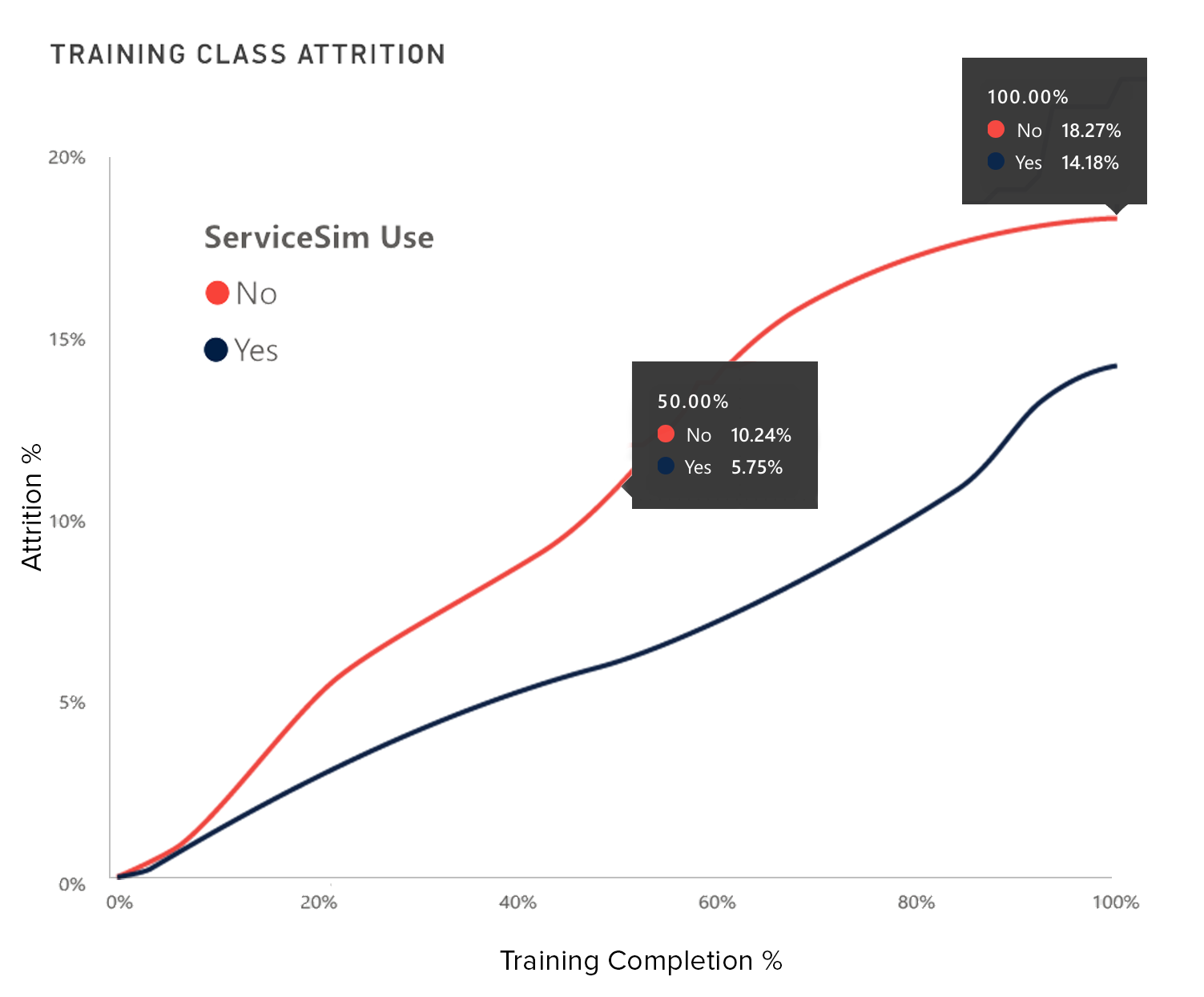Born between 1997 and 2012, Gen Z has grown up in an environment with technology at their fingertips, constantly engaged and receiving information–and they expect the same from their workplace learning. Yet, many companies still rely on traditional training methods that fail to engage or prepare employees for real-world challenges. The result? High turnover, disengaged employees, and missed business opportunities. It’s time for a new approach–one that speaks Gen Z’s language and sets them up for success from day one.
The Challenge: Hiring & Retaining Gen Z Workers
Hiring Gen Z is proving to be a challenge for many companies. 75% of employers say some of their Gen Z hires have fallen short of expectations, and 1 in 6 hiring managers admit they’re hesitant to hire more Gen Z employees in the future. But the issue isn’t a lack of ability–it’s a disconnect between how Gen Z has been wired to work and what companies expect. With Gen Z becoming the majority in the workforce, companies that fail to adapt will struggle to attract, retain, and develop this new generation of talent. However, when trained the right way, Gen Z could be the most adaptable, tech-savvy, and effective customer service generation yet.
Why Traditional Training Falls Short
If your company relies on traditional training methods, you may be pushing Gen Z talent away.
- Static content kills engagement – Classroom training and passive e-learning modules lack interaction and fail to keep Gen Z engaged.
- Inconsistent mock call practice – Scheduling conflicts reduce opportunities to practice skill development, leading to knowledge gaps.
- Theory without practice leads to poor retention – Without real-world application, skills don’t stick, and engagement drops.
How to Train Gen Z the Right Way
Forget passive training–Gen Z thrives on dynamic, hands-on experiences that make learning stick. They are used to platforms like TikTok and Instagram that deliver short-form content in a way that drives engagement. Translating that to workplace learning emphasizes the importance of microlearning strategies and interactive practice. Here’s how companies can reimagine learning for Gen Z:
- Be Purpose-Driven – If they are not able to understand the “why” of their work, they won’t remain invested.
- Go Digital – Training must be accessible online and seamlessly integrated into workflows through digital solutions otherwise it is irrelevant to Gen Z.
- Prioritize Action Over Theory – Gen Z learns by doing, not by reading slides or sitting through lengthy lectures.
- Deliver Instant Feedback – Real-time performance insights keep them engaged and consistently improving.
- Encourage Independent Yet Social Learning – Gen Z craves autonomy while valuing peer interaction and collaboration.
The Competitive Advantage of Effective Training
Now, imagine a customer service environment where agents are confident, engaged, and handle customer interactions with ease. Picture a team that learns faster, retains information better, and stays longer because they enjoy the training process. Companies that embrace modern training techniques aren’t just improving their workforce–they’re gaining a competitive advantage.
The Solution: AI-Powered Training
Gen Z’s demand for interactive, on-demand, and personalized learning experiences deserves a training solution to meet those needs.
- On-Demand Access – An AI-driven platform allows employees to train anytime, minimizing downtime and maximizing productivity.
- Interactive, Hands-On Learning – Simulations powered by AI replicate real-world customer interactions, enabling employees to learn through experience rather than passive instruction.
- Instant, Actionable Feedback – Real-time performance evaluations provide immediate insights that help agents refine their skills on the spot.
- Personalized Learning Paths – AI can adapt training to the individual, identifying areas for improvement and reinforcing strengths.
- A Safe Space to Fail and Improve – Employees can practice in a risk-free AI environment, building skills without fear of mistakes impacting customers.
By leveraging AI-powered training, your company can bridge the gap between traditional learning methods and Gen Z’s expectations, leading to:
- Higher employee engagement
- Stronger skill retention and confidence
- Reduced turnover
- Enhanced customer engagement and satisfaction
The future of workplace training is here. Are you ready to evolve with it?
SUBSCRIBE FOR EMAIL UPDATES

